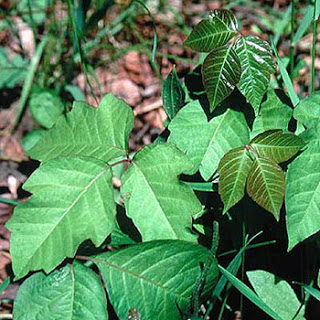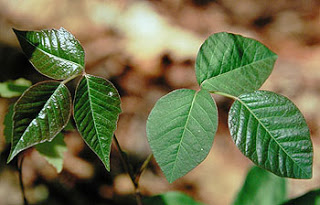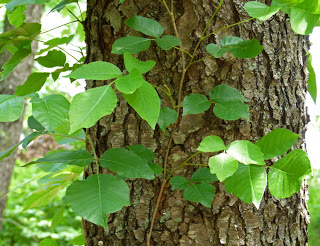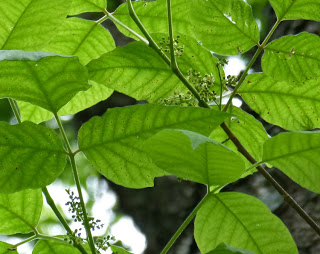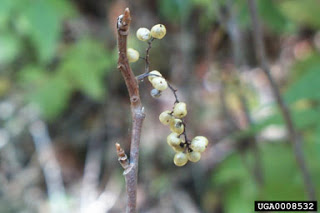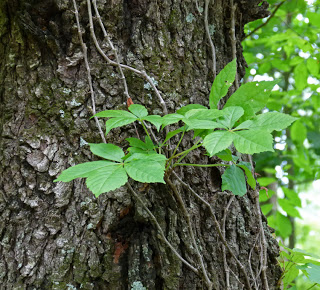Hopefully, most people are familiar with the saying, Leaves of three, let it be. That’s Poison Ivy. Poison Ivy is native to North America and tends to grow along the edges- edges of forests, edges of roads, edges of streams and lakes, and edges of lawns are where you will see huge amounts of Poison Ivy. Poison Ivy can grow in many ways also. It can creep along the ground, growing new roots as it spreads. It climbs trees growing large hairy vines. It can be a small plant or large shrub. In dense forests, it doesn’t get enough sun to grow well, and in open fields, the grasses tend to crowd it out. Poison Ivy has very tough roots, and once established, it is quite difficult to get rid of. Visit Poison-Ivy.org for terrific information about this troublesome plant.
Poison Ivy can be very difficult to identify though. The only constant is its three leaves, but since many other plants have three leaves as well, this may not always be relied on. Sometimes the leaves of Poison Ivy are notched, and sometimes they aren’t. Same for shiny leaves and red stems. Sometimes the leaves are small, and sometimes they grow to enormous size. In the spring, newly sprouting leaves may be red. In the autumn, the leaves turn beautiful colors, but please don’t add them to you fall arrangements!
The rash that Poison Ivy causes humans is from the sap, which has an oil called “urushoil” in it. Urushoil only comes out of the plant where it is damaged; however, Poison Ivy is very fragile and breaks easily. Wind, animals, or chewing insects can cause urushoil to be released. When urushoil gets on your skin, your skin absorbs it slowly. Your skin will then have a reaction, resulting in a red rash with blisters. If urushoil gets on your dog or clothes, it can later transfer to you! If you burn wood with Poison Ivy vines on it, the smoke will carry the oil to your lungs, and a trip to the hospital will probably be necessary. Not everybody is allergic to Poison Ivy, and some people are more allergic than others. If you know you’ve been exposed, wash the area with cold water as soon as possible. Hot water opens your pours so the oil can enter easier.
It grows small flowers which produce white waxy berries that many birds love.
Animals do not react to the oil as humans do, but your pet might get the oil on its coat, to be transferred to you when you pet him. Many animals can eat Poison Ivy without harm, thank goodness!
Virginia Creeper is often mistaken for Poison Ivy since it also climbs trees, but it you look carefully, you will see that it has five leaves, rather than three. From some angles you may only view three and this leads to the confusion. Virginia Creeper does not cause any skin reactions. Jack in the Pulpit, a wildflower, also has three leaves as it grows close to the ground.
Since it is a native plant, Poison Ivy has developed relationships with other native plants and animals over the ages. Click this picture for a larger more readable version, and count up the animals that use it for food or shelter. You won’t find this with invasive plants! So watch where you step or grab as you walk around the Preserve.

